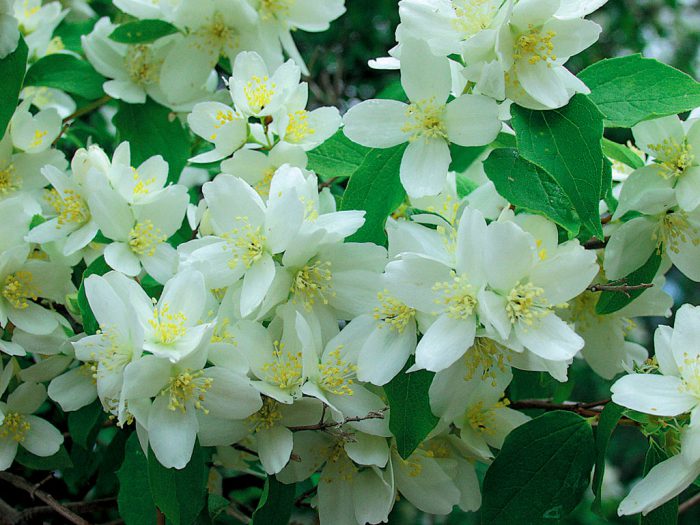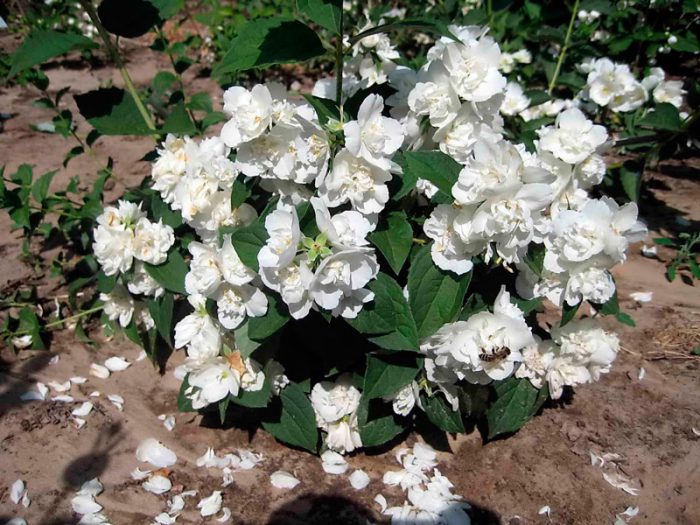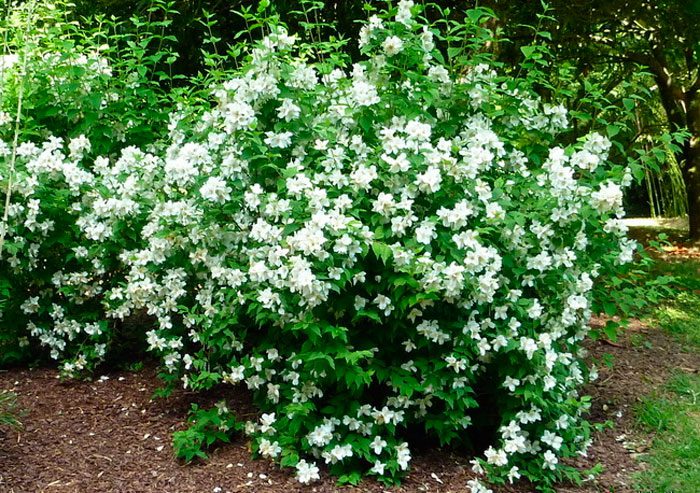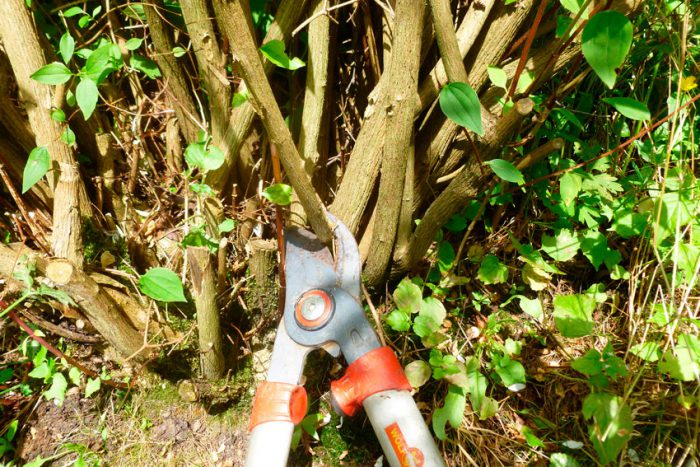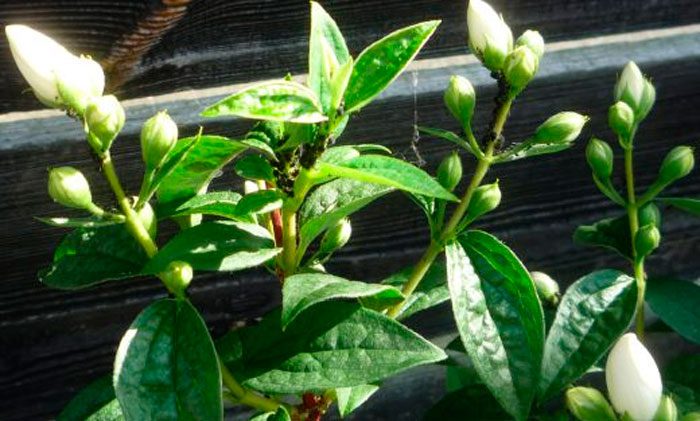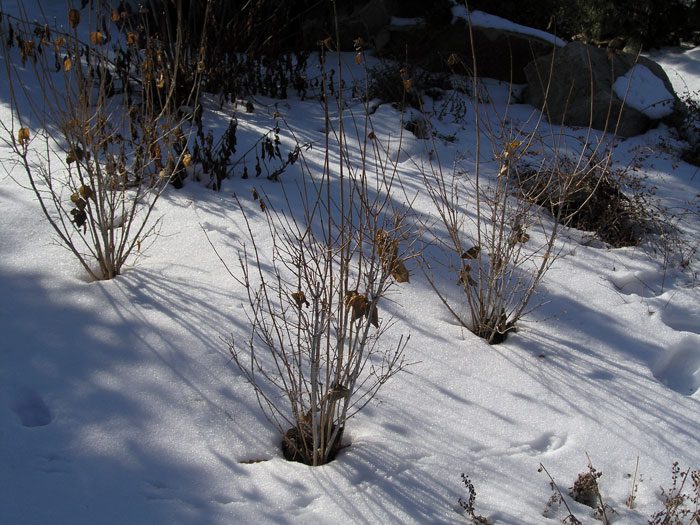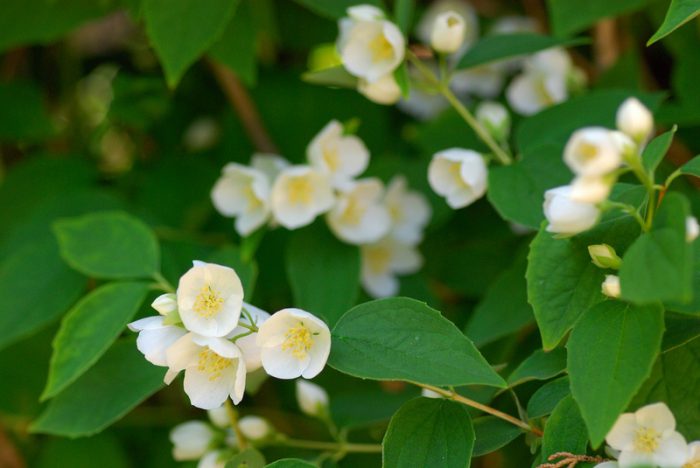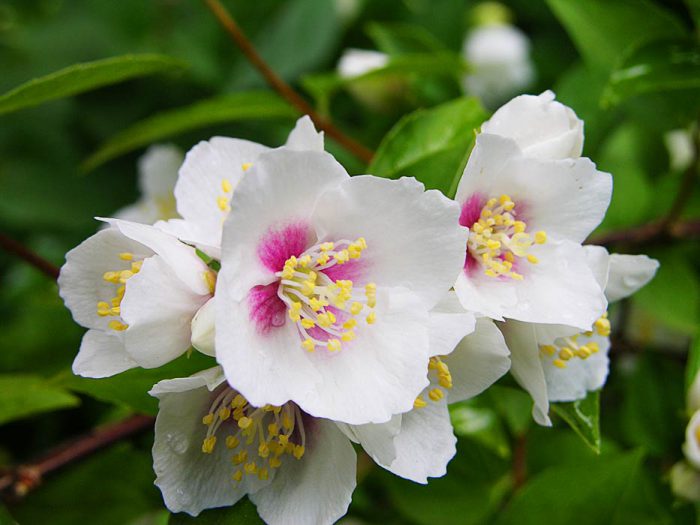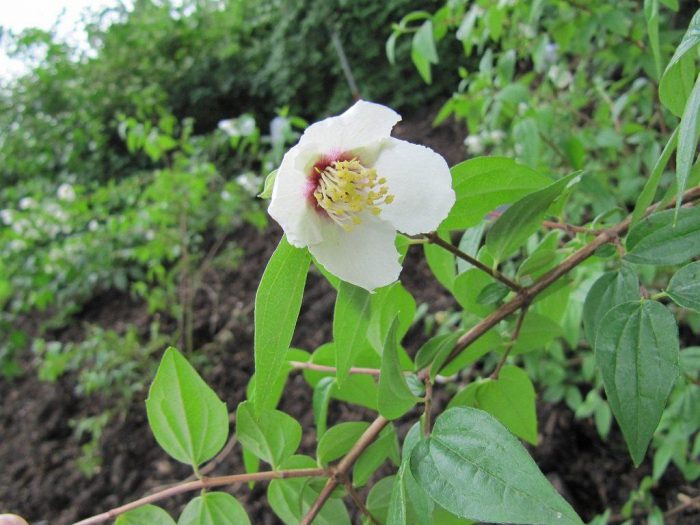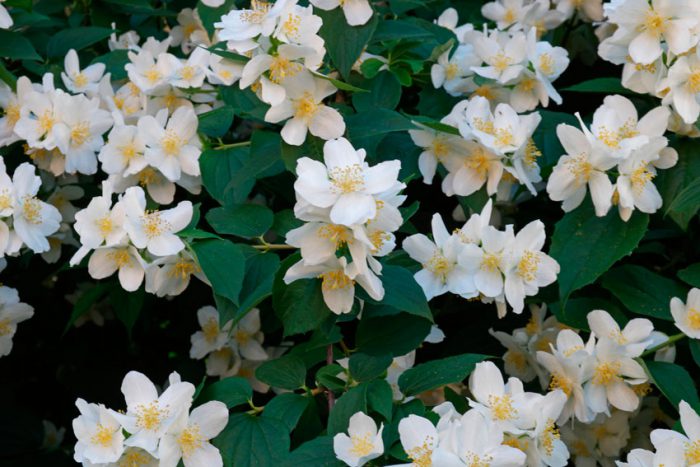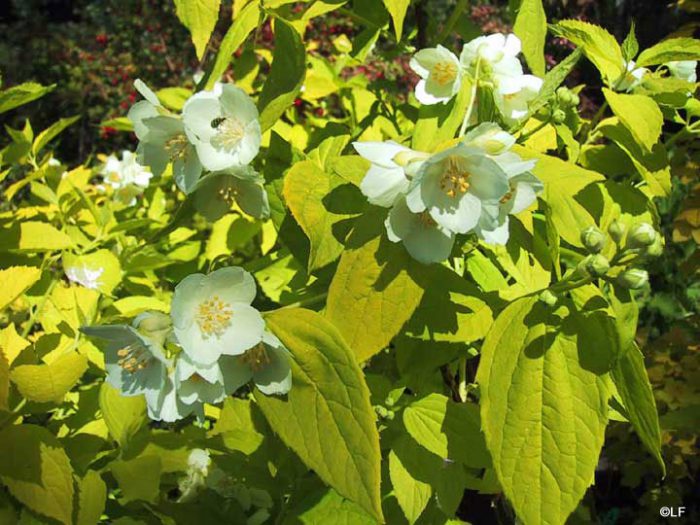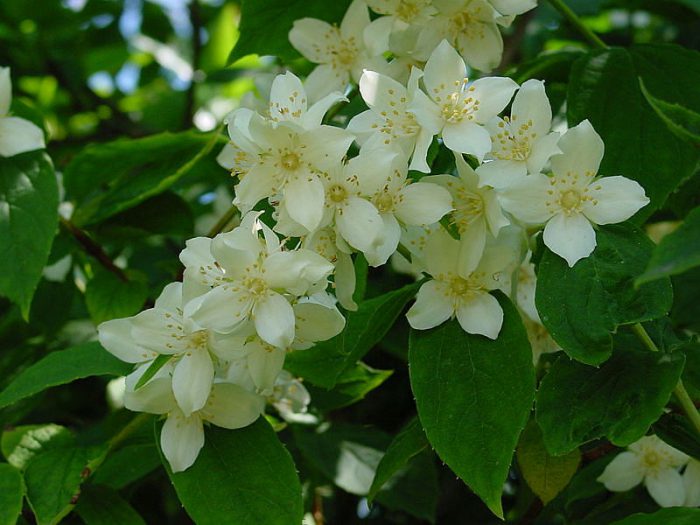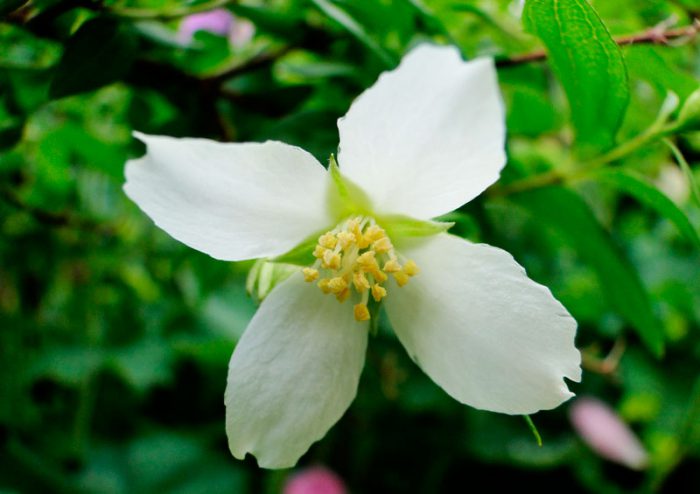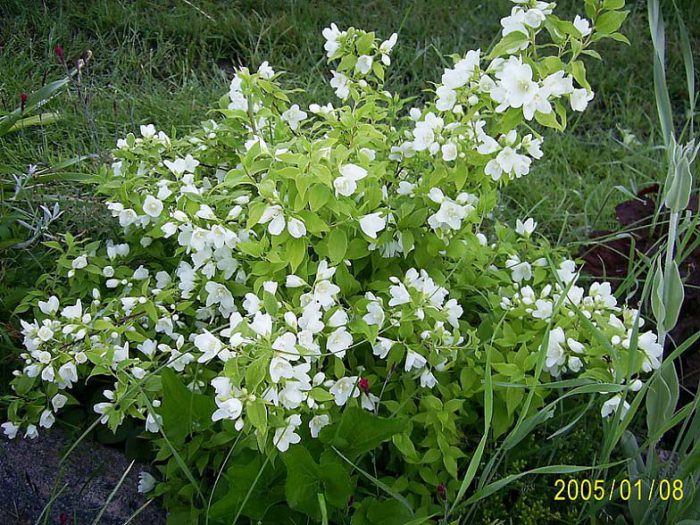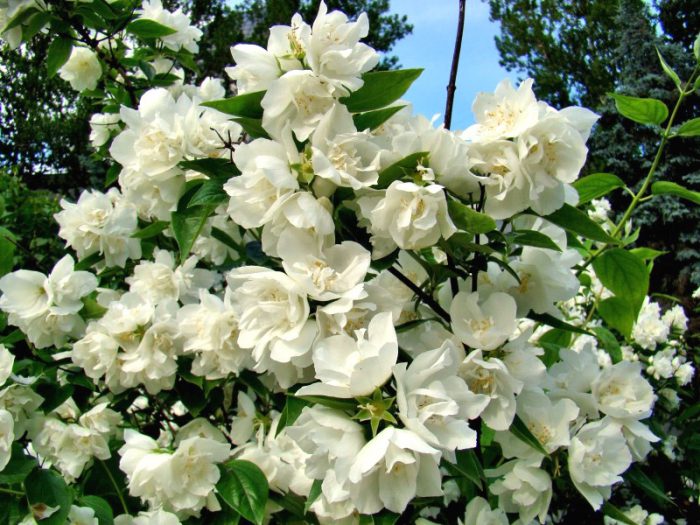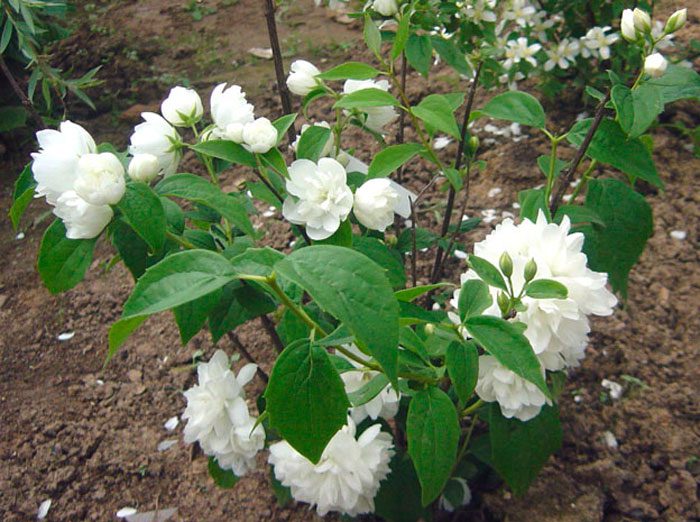Chubushnik (Philadelphus) is also called garden jasmine. It is directly related to the genus of semi-deciduous and deciduous shrubs, which are representatives of the hydrangea family. This shrub is called jasmine, because the flowers of such plants are very similar in appearance and also have the same pleasant aroma. Chubushnik-Philadelphus was so named in Latin in honor of the king of Egypt, Ptolemy Philadelphus. Chubushnik is also called it due to the fact that shanks and mouthpieces for pipes intended for smoking were made from sufficiently strong wood with a soft core. Under natural conditions, such a plant can be found in Europe, North America, and also in East Asia. In nature, there are 50–70 species of chubushnik, but in culture there are many varieties of such a shrub.
Content
Chubushnik features
The plant has many small trunks, on the surface of which there is a gray bark, which is quite thin. In young stems, the bark is usually brown and flakes off. This shrub has very strong wood and a wide heart. The leaf plates are 2-7 centimeters long, and their shape depends on the species and can be ovoid, elongated or broadly ovate. The formation of racemose inflorescences occurs at the tops of young shoots. The flowers are fragrant and can be semi-double, simple or double. The fruit is a box with a three-pentahedral shape. There are very small seeds inside it. Such a plant is frost-resistant, but it should be borne in mind that different types of this shrub in the same climatic conditions can behave completely differently. If, due to severe frosts in winter, the chubushnik is severely damaged, then it will not die. In this case, it is recommended to completely cut off the part that is above the ground. Thanks to a well-developed root system, the plant will grow back rather quickly, and will again delight with its spectacular appearance.
Chubushnik planting
When to plant a chubushnik
For planting this shrub, it is recommended to choose a well-lit area away from trees, large shrubs and buildings. In a shaded place, the flowers of the chubushnik become smaller, and the stems become elongated. It will grow best in soil consisting of sand, humus and leafy soil (2: 1: 3). In the event that the soil is poorly drained, a good drainage layer should be made at the bottom of the planting hole. It is recommended to plant in autumn from the second half of September to mid-October. Planting can also be done in spring, but this must be done before the leaves appear.
How to plant correctly
The distance between the planted bushes must be left depending on the variety, and its value can vary from 0.5 to 1.5 meters. In the event that a green hedge is created with the help of this shrub, then the gaps between the bushes should be about 0.5-0.7 meters. The size of the fossa should be 60x60x60. At the bottom, a fifteen-centimeter drainage layer of sand mixed with broken bricks should be made. After that, it is necessary to pour in a not very large amount of a suitable soil mixture, its composition is mentioned above. It is recommended to prepare the pit in advance, namely 7-15 days before planting. After the soil settles in the hole, a seedling is placed in it so that the root collar is flush with the ground. After that, the hole should be filled with nutrient soil. When the plant is planted, it must be watered, and 20-30 liters of water are taken for 1 bush. When the water is absorbed, the soil will settle, and then the required amount of dry soil must be poured into the hole. If suddenly, after planting, the root collar turns out to be underground at a depth of about 3 centimeters, then you should not worry. But if it goes deeper, then rot may appear on it. After 1-2 days, you need to cover the trunk circle with a layer of mulch (sawdust or peat), while its thickness should be 3-4 centimeters.
Correct care
How to care for a chubushnik
You can understand that the chubushnik needs watering by its sheet plates. Such shrubs react negatively to drought, and during a long dry period, their foliage becomes lethargic and saggy. Once a week, 20-30 liters of water must be poured under each bush, while when the plant blooms, it will need almost daily watering. When it is watered, then you need to loosen the top layer of the soil and pull out all the weeds at the same time. In order to significantly reduce the number of watering, weeding and loosening, in springtime, the trunk circle should be sprinkled with mulch. Once a year, experts advise, pour one bucket of slurry under each bush (1:10), and it is better if you feed the mock-orange in the spring. When the plant blooms, then wood ash will need to be poured onto the surface of the trunk circle, and then watered. When the bush is 4 years old, you can start feeding it with mineral fertilizers, for this, 5 liters of water are taken for 1 bush, 15 grams of potassium sulfate and urea, 30 grams of superphosphate. When the plant blooms, 25 grams of superphosphate and 15 grams of potassium sulfate are added to 1 square meter of soil. If desired, instead of potassium, you can pour from 100 to 150 grams of wood ash under each bush. Nitrogen-containing fertilizers for fertilizing can only be used in spring.
Pruning
In order for the flowering to be plentiful every year, the bush must be cut regularly. It should be remembered that a large number of flowers grow only on last year's relatively powerful shoots, and a smaller number of flowers appear on older stems. Because of this, the shrub takes on an unkempt, disheveled appearance. In this regard, in a faded plant, it is necessary to cut off the branches on which there were flowers to the strong shoots of this year, which are below.Over time, these shoots gain strength and grow stronger, and the next year many beautiful flowers will form on them. Pruning is also sanitary in autumn. So, you need to remove all the branches that were broken, diseased and dry, and you also need to cut off those of them that thicken the crown. The same goes for shoots. Once every 3 years, it is necessary to cut off those stems that are more than 12 years old. Anti-aging pruning is done in early spring. Several trunks are selected, and they are cut to a height of 30 centimeters, the rest should be cut off completely. Garden pitch is used to process cuts, and the trunk circle is sprinkled with a layer of mulch (peat). By the autumn time, young rather strong shoots will grow from dormant buds. Pruning is prohibited during sap flow.
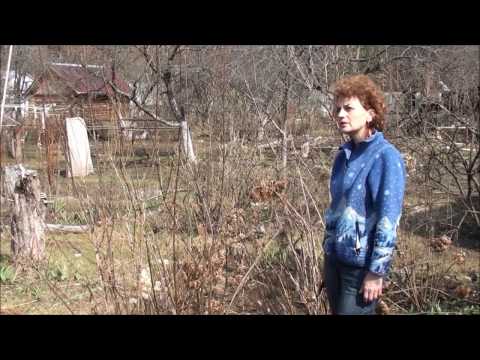

Watch this video on YouTube
How to transplant
The transplanted shrub takes root quickly enough, especially if you transplanted it, observing all the rules. But at the same time it is worth remembering that the crown of the chubushnik will have to be cut off completely, and it will not be able to bloom for a whole year. About half a month before transplanting, a hole should be prepared, since the soil should settle. The day before transplanting, it is necessary to thoroughly water the bush, and in a day it is necessary to cut off completely ½ part of the old stems, while the remaining shoots must be shortened. The dug out bush is placed in the prepared hole. After planting, the chubushnik must be watered abundantly. The transplant can be carried out from mid-September to the second half of October, or in the spring before the buds open. It should be borne in mind that transplanting a shrub in the autumn period is much better, since in this case you will not need to rush.
Pests and diseases
Spider mites, legume aphids, and green leaf weevils can settle on this plant. Rogor or Karbofos can be used against aphids. To destroy the spider mite, you must use a solution of Phosphamide (2%) and Keltan emulsion (3%). The treatment should be repeated 2 or 3 times at intervals of 7 days. Spray the bush with Chlorophos and this will kill the weevils, as well as their larvae.
Features of growing in the Moscow region and Siberia
Such a plant is completely unpretentious, therefore it can be grown in the Moscow region or other southern regions, because it is distinguished by its winter hardiness. For cultivation in Siberia, it is best to choose special varieties of the eternal mock-orange, which has a very powerful root system. Such a plant is distinguished by its high frost resistance, so it can withstand frost up to minus 35 degrees without shelter. In areas where there is a large amount of snow, it is possible to cultivate less frost-resistant varieties.
Reproduction of chubushnik
This plant can be propagated very simply with the help of seeds, cuttings, layering and dividing the bush. It is relatively easy to grow a mock orange from seeds, but this method of propagation is not recommended for varietal plants. The fact is that grown seedlings may not inherit parental traits.
Seed propagation
Before sowing seeds, they should be stratified, which lasts 8 weeks, while the required temperature is 2-3 degrees. In January, seeds are mixed with a moistened mixture of sand and peat, everything is poured into a container and put into the refrigerator in the vegetable section. In March, seeds are sown in boxes filled with a soil mixture consisting of 2 parts of peat, 1 part of leafy soil, 1 part of humus and ½ part of sand. A thin layer of sand is poured over the sown seeds, and the container is covered with glass. The ground should be a little damp all the time, so it will have to be sprayed 2 or 3 times a day. After 7-10 days, the first seedlings should appear. Once they have a few true leaf blades, they can be transplanted into open soil.At first, the transplanted seedlings must be protected from direct sunlight.
Propagation by green cuttings
Everything is rooted with green cuttings. For cutting cuttings, developed rather large shoots are used. It should be noted that growth shoots, which have a rather wide hollow core and, at the same time, have a rather large distance between the buds, are not suitable for this purpose. The fact is that rot may well appear in these voids. A green stalk with a heel (annual shoots with a particle of last year's shoot) takes root best and fastest. The lower cut of the cutting must be treated with a root growth stimulating agent. Planting is carried out in a container filled with a mixture of earth and sand, enriched with nutrients. The landing is made on the floor a centimeter depth, adhering to the 40x10 scheme. On top of them, you need to cover them with a cap made of polyethylene or glass, put the container in a place where there is diffused light. The cuttings should be moistened with a sprayer often enough.
Reproduction by layering
Layers are formed rather quickly and they take root in 5-7 cases out of 10. This propagation method is recommended to use after rejuvenating pruning, while the bush should be cut to a height of 5-7 centimeters from the ground surface. Around the bush, the soil must be dug up, fertilized and leveled. A young shoot with the help of a soft wire should be pulled next to the bud located at the very bottom, then it is placed in a small groove (15 mm deep), fixed and sprinkled with soil. It is quite possible to get several layers at once from one bush in one season, if they are arranged radially. With the onset of spring, they should be cut off from the parent bush and dug up. They will have to grow for another couple of years.
Reproduction by dividing the bush
Before sap flow begins in the spring, or after all the leaves fall off the overgrown bush in the fall, the mock-orange must be dug out. Further, it is divided into several divisions and, as soon as possible, they are planted in prepared holes, so that they do not have time to dry out. In the process of dividing the bush, old branches should be cut off, and young shoots should be dug out.
Wintering
Preparation for wintering
In the autumn, when the plant has faded, thinning and sanitary pruning is carried out. Chubushnik is fed with potassium-phosphorus fertilizer, and the surface of the soil around the bush is sprinkled with a rather thick layer of mulch (sawdust or peat).
Wintering
You do not need to cover the shrub for the winter. If some shoots are damaged by severe frost, then after pruning in the spring, the bush will grow again. In winter, there is no need to care for the shrub.
The main types and varieties of chubushnik


Watch this video on YouTube
Gardeners cultivate only a few types of chubushnik, as well as a large number of different varieties that have appeared thanks to breeders.
Common mock-orange, or pale (Philadelphus pallidus)
His homeland is the Caucasus and the south of Western Europe. This species, grown in the Moscow region, begins to bloom very first. Such a shrub has a height of about 300 centimeters, while its erect stems are bare. The length of simple oblong elliptical leaf plates is about 8 centimeters. There are sparse notches on the edge, and a sharpening in the upper part. The front side of the leaf is naked, rich green color, and the back side is light green, pubescent. The creamy white fragrant flowers are about 3 centimeters in diameter. They are part of the inflorescences in the form of brushes (5-7 flowers each). The plant is frost-resistant and can withstand temperatures up to minus 25 degrees. There are decorative forms: large-flowered, silvery-bordered, low, golden, terry, and willow. Popular varieties:
Chubushnik Virginal
This variety appeared in 1909 and its creator is Lemoine. The bush can grow in height from 200 to 300 centimeters.It has a wide crown, and the peeling bark on the shoots is brown in color. The length of pointed leaf plates is 7 centimeters, they are oval in shape and dark green in color, turn yellow in autumn. In July, inflorescences appear in the form of brushes, reaching 14 centimeters in length. Terry white flowers have a diameter of about 5 centimeters. Such a variety can retain its decorative effect for two decades.
Chubushnik Belle Etual
This variety, bred by Lemoine, is his main pride. In middle latitudes, the height of such a plant does not exceed 100 centimeters, but in France it is slightly higher (about 150 centimeters). The leaves are small and have a drawn-out tip. The scent of the flowers is reminiscent of strawberries. They are simple, bell-shaped, in the central part they have a large carmine speck. Their diameter is about 4 centimeters.
Chubushnik Bicolor
Single flowers have a diameter of about 5 centimeters. They grow on the tops of the lateral axillary shoot. The fluffy bush has a height of about 200 centimeters. It is often used in landscaping.
Crown mock-orange (Philadelphus coronarius)
The height of this southern European species is 300 centimeters. In the wild, it can be found in Asia Minor, the Caucasus and southern Europe. Young shoots are covered with cracking bark, colored brownish red or light yellow. They have dense foliage. Rare denticles are located along the edge of oppositely located petioled oval leaf plates. Their front side is naked, and the seamy side has pubescence located on the veins. The fragrant flowers are about 5 centimeters in diameter and are light white in color. They are part of the brush-shaped inflorescences located at the ends of the shoots (5-7 pieces each). Flowering lasts about 20 days. Gas and smoke resistant. Withstands frosts down to minus 25 degrees. Popular varieties:
Aureus
The height of such a shrub is about 200-300 centimeters. It is fast-growing and has a spherical crown of rich yellow leaves. In summer, they turn yellow-green and do not change their color until they fall off in autumn. There are many flowers that are difficult to distinguish against the background of the leaves. However, you can guess about flowering by a very pleasant smell coming from the flowers.
Bowles Variety or Variegatus
The height of the bush is about 300 centimeters. On the edges of its leaf plates there is an uneven, rather wide strip of cream color.
Innosens
The height of the compact bush does not exceed 200 centimeters. There are fragrant single simple cream-colored flowers. Irregular cream-colored specks are located on the leaf plates.
Chubushnik Lemoine (Philadelphus x lemoinei)
This is a hybrid plant created by crossing the common and small-leaved mock-orange. It is very popular with gardeners in North America and Europe. The height of the bush with spreading branches is about 300 centimeters. The length of the ovoid lanceolate leaf plates is about 4 centimeters. White fragrant rather large flowers are collected in 3-7 pieces in racemose inflorescences. Popular varieties:
Ermine Mantle (Manto d'Ermin)
The height of the bush does not exceed 100 centimeters. There are beautiful semi-double flowers, painted white. Blooms profusely for about 6 weeks.
Chubushnik Shneesturm
Small (about 2–2.5 centimeters in diameter) fragrant flowers, painted white, which are part of racemose inflorescences, bloom on such a girlish mock-orange. Large leaves are colored dark green and turn yellow in autumn. The height of the bush is about 200 centimeters.
Glacier
The height of the bush is about 200 centimeters. Large fragrant white flowers bloom in bunches on such a terry chubushnik. Flowering lasts about 20 days.
Charm
One of the most spectacular chubushniks. On a two-meter bush there are large densely double snow-white flowers that almost do not smell.They are part of inflorescences (from 9 flowers or more). It should be remembered that the lower part of this plant is bare, and in order for it to always look beautiful, experts recommend planting a shrub of short stature in front of it.
Chubushnik Snowstorm
The height of the bush is about 200 centimeters. Terry flowers are white and are part of the inflorescences (7-9 pieces each). Abundant flowering lasts about 20 days.
Also, gardeners grow such mock-mushrooms as: Gordon, thin-leaved, fluffy, small-leaved, Caucasian, Shrenka, broad-leaved, grayish, odorless, large-flowered.


Watch this video on YouTube

